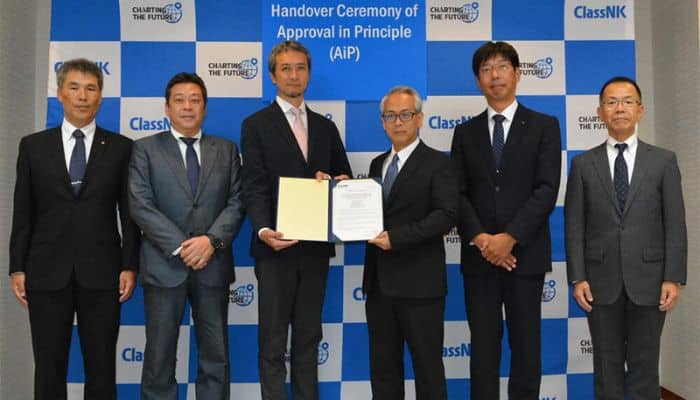This is the world’s first AiP certification for a ship equipped with a low speed two-stroke hydrogen-fueled engine as the main propulsion engine.
Demonstration operation of the vessel will be conducted for two years from around FY2027 as part of the “Development of marine hydrogen engines and MHFS (*2)” which was adopted by Green Innovation Funding Program of the New Energy and Industrial Technology Development Organization (NEDO).

Prior to the demonstration operation, J-ENG’s large low-speed two-stroke hydrogen-fueled engine and Kawasaki’s MHFS will be installed in the vessel by FY2026. MOL and MOL Drybulk will be in charge of ownership and operation management of the vessel and Onomichi Dockyard will be in charge of the development and building of the vessel, and they will cooperate toward the demonstration operation.
The five companies held a Pre-HAZID meeting (*3) on June 28-29, 2023, together with ClassNK and the National Maritime Research Institute, National Institute of Maritime, Port and Aviation Technology. The parties completed identification of the risks and issues to be considered in further design for the parcel layout concept of liquefied hydrogen fuel tank and fuel supply system, and confirmed that the design of the vessel can proceed further based on the current parcel layout.
*1 Parcel layout concept:
Proposed layout of liquefied hydrogen fuel tank and other hydrogen fuel related equipment onboard and the design concept.
*2 MHFS:
Marine Hydrogen Fuel System (Marine Hydrogen Fuel Tank and Fuel Supply System)
*3 Pre-HAZID meeting:
HAZID meeting:Risk assessment meeting in which experts discuss the magnitude and frequency of potential system hazards to ensure that the system as a whole is sufficiently safe.


Leave a reply